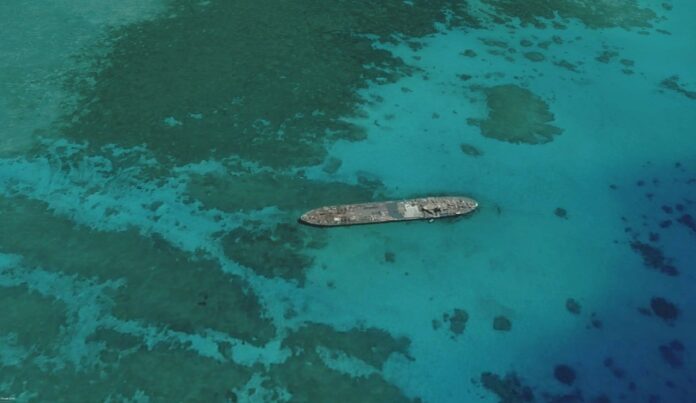
Second Thomas Shoal has emerged as a South China Sea flashpoint, as China smothers Philippine aspirations to protect its exclusive economic zone (EEZ). This submerged reef 120 miles (194km) west of Palawan is where the Philippine Navy’s BRP Sierra Madre was grounded in 1999 to reinforce its territorial claim.
China has been harassing Philippine resupply missions to the Sierra Madre’s garrison for more than a decade, but last year’s intensification reached an alarming scale. For example, a swarm of 38 Chinese vessels recklessly manoeuvred and employed water cannon during a resupply mission on 10 November 2023. One month later on 10 December, the China Coast Guard (CCG) deliberately rammed a Philippine vessel.
The CCG and People’s Armed Forces Maritime Militia (PAFMM) are leading this grey-zone coercion, but the People’s Liberation Army (PLA) plays a supporting role. China’s sea control tactics comprise swarming to achieve temporary local control, plus mission-kill actions like water cannon and ramming. Unfortunately, the Philippines does not have the fleet size nor ship bulk to effectively counter such tactics.
Why is China doing this? It reflects Beijing’s expansionist maritime territorial claims, and an exceptionalism whereby China believes international law does not apply to it. In 2016, the Permanent Court of Arbitration ruled that Beijing’s South China Sea territorial claims had no legal basis.
Sino-Philippine ties were relatively good under Rodrigo Duterte’s administration, primarily because he complied with Chinese demands, but President Ferdinand Marcos Jr. has been more proactive in defending Philippine sovereignty. In January 2023, Marcos met Chairman Xi Jinping and they agreed to resolve differences peacefully. However, that very month, Filipino fishermen inside the Philippine EEZ were chased away by the CCG, and the following month the CCG aimed a laser at a Philippine Coast Guard (PCG) vessel.
China’s aggressive actions forced Manila to change tack. As PCG spokesman Commodore Jay Tarriela pointed out: “…The Philippine government has chosen to expose China’s aggression and unlawful actions in the West Philippine Sea. It is important to clarify that the escalating tensions in the West Philippine Sea are not caused by the United States, but by the PRC. While the US is an ally of the Philippines, it is not the root cause of the tensions.
“The Chinese government should avoid confusion and learn to recognise that if they were only sincere in their words and chose not to bully other countries in the South China Sea, tensions would not be as high. Unless, of course, what China means on lowering tension is being submissive or not reacting to their bullying and aggressive actions!”
The induction of BrahMos missile batteries and eventual acquisition of multirole fighters will give the Philippines more heft, but such assets are inappropriate against grey-zone tactics. Furthermore, a South China Sea Code of Conduct, which China has been stalling, will achieve nothing. Instead, the PCG and Philippine Navy need a stronger presence to deter an emboldened China, though without unnecessarily stoking tensions.
Philippine-US ties rebounded after Duterte’s departure, but the two Mutual Defense Treaty partners need to decide what an “armed confrontation” entails and how they will respond to Chinese provocation. The American military is stretched taut by current commitments and conflicts, but Boeing P-8A Poseidon aircraft have over-watched Second Thomas Shoal resupply missions.
The Philippines must implement best practices for resupplying the Second Thomas Shoal garrison, and eventually replace the grounded rust bucket that was only ever an interim solution. China’s actions have already prompted Manila to consider establishing a permanent outpost there (e.g. an oil platform-type structure that can land helicopters), which would provide a fait accompli and increase the potential cost of Chinese interference.
Furthermore, the Philippines needs to widen its circle of partners. Naturally, restoring Philippine control over its EEZ requires the full spectrum of diplomatic, economic and information tools. Manila cannot afford to lose control of Second Thomas Shoal, as it did with Scarborough Shoal in 2012.
The Philippines occupies eight features in the Spratlys, the largest of which is Thitu Island. PAFMM vessels have swarmed other shoals in the Philippine EEZ, with 135 boats detected at Whitsun Reef last December, for example.
Will Manila show resolve? Perhaps it can with American support, for assuredly China will not back off from attempts to occupy this feature located just 20 miles (32km) from its own Mischief Reef base.
by Gordon Arthur












